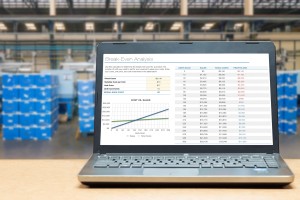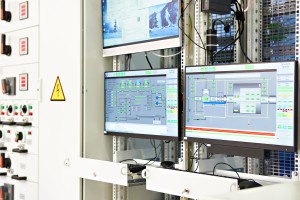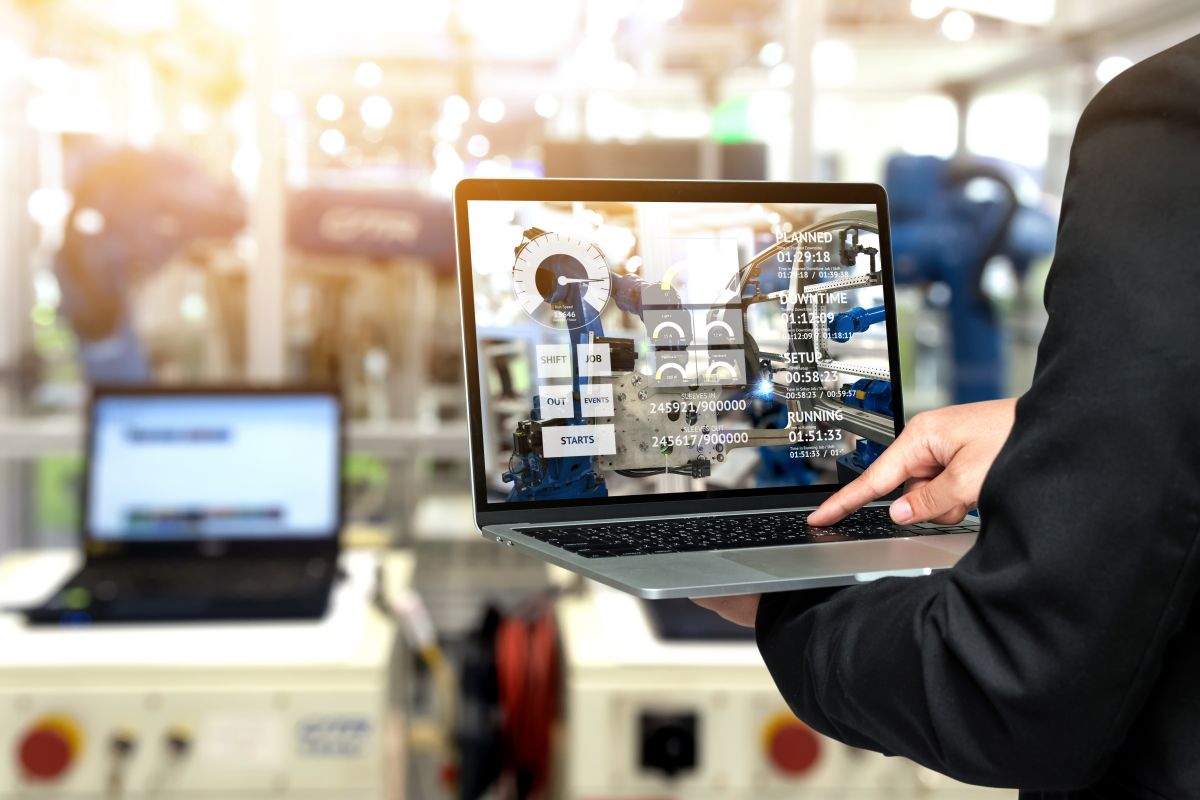Wouldn’t it be nice if the equipment at your facility spoke up when it required care? Essential machines have always communicated with their operators when repairs were on the horizon, whether the operator observed a drop in efficiency or everyone could hear a horrific racket every time the machine started up.
There’s nothing wrong with knowing your equipment inside and out to predict when maintenance is required and how to effectively prolong the machine’s life span. Still, old-fashioned methods require extremely specialized training and natural talent.
Nowadays, finding and hiring “the machine whisperer” isn’t necessary to determine when your systems need maintenance. Instead, modern-day devices measure key performance indicators to paint a picture of the machine’s health in real-time. Then, the devices record and communicate the data to compatible software, called manufacturing condition monitoring software, and make it significantly easier to manage the performance of crucial machines at scale.
How Does Manufacturing Condition Monitoring Software Work?
 No software intended to manage machine parts would work if there weren’t some kind of dialogue occurring between the machine and the software, right? That’s where the magic happens with manufacturing condition monitoring and its corresponding software.
No software intended to manage machine parts would work if there weren’t some kind of dialogue occurring between the machine and the software, right? That’s where the magic happens with manufacturing condition monitoring and its corresponding software.
First, it is necessary to outfit the machines your business relies on with smart sensors that will measure key performance indicators and record them. Second, because the sensors are internet-enabled, they transmit the data to the corresponding software so users can conveniently review all the numbers from virtually anywhere.
Instead of schlepping to the factory floor to see if the assembly line machines are in good operating condition, an engineer or technician need only load up the manufacturing condition monitoring software. Then, they can review the data from the office, at home, at the local coffee shop, or anywhere else they have internet access.
What Are Some Common Features of Manufacturing Condition Monitoring Software?
Many organizations elect to hire software specialists to build end-to-end solutions specifically engineered for their purposes, as out-of-the-box garden variety versions of software often neglect key functionalities that render them unusable for certain organizations.
Here are some of the most common features to expect in manufacturing condition monitoring software.
Condition Data Tracking
 Thanks to compatible hardware installed on the machine components, users have a minute-to-minute representation of the machine’s health. Temperature, strain, noise, vibration, pressure, force, rotational speed, and more are calculated so that supervisors have the information they need to make an informed decision regarding maintenance and upkeep.
Thanks to compatible hardware installed on the machine components, users have a minute-to-minute representation of the machine’s health. Temperature, strain, noise, vibration, pressure, force, rotational speed, and more are calculated so that supervisors have the information they need to make an informed decision regarding maintenance and upkeep.
While having a human operator review the information is always prudent, it’s not necessarily required. The condition data tracking feature of the software is designed to notice abnormalities and issue alarms when critical thresholds are exceeded. Then, with minimal effort, users always know what is going on with the machine parts of the facility.
Calibration Management
Of course, you shouldn’t expect the best results, or good results in the first place, if your machines are not properly calibrated. Luckily, the software also lends a hand in completing this essential task.
Manufacturing condition monitoring software can often identify the proper calibration range and tolerances and schedule regular calibrations to ensure everything functions optimally.
Once the parameters are set properly, the software stores the information so calibration can be completed quicker moving forward. Users retain all calibration history, certificates, and labels to verify in case an inspector appears to confirm an event later on.
Data Analysis
With so much data stored, it’s only right the software builds on it and generates data analysis reports to help users understand the context of each component. The software can create reports and explore the trend to build a predictive model, assisting managers to effectively plan for the future.
Some manufacturing condition monitoring software takes it yet another step, creating a comprehensive “root cause analysis” that establishes the probable reason for common machine issues, including overheating, corrosion, and more.
Forecasting and Optimization
Our modern society incorporates technology in virtually every aspect of our everyday lives, and, as such, developers are training AI to understand more and more about our world.
A well-developed manufacturing condition monitoring software utilizes AI to forecast trends, make maintenance recommendations, effectively predict breakdowns before they happen, and offer solutions for improved efficiency.
By implementing the solutions provided by this specialized software, managers can improve performance and increase the bottom line for the company.
What Are the Benefits Associated With Using Manufacturing Condition Monitoring Software?
 In our increasingly technologically integrated society, using computers and software to monitor and automate as many everyday operations as possible is crucial to enjoying the biggest possible impact in any industry.
In our increasingly technologically integrated society, using computers and software to monitor and automate as many everyday operations as possible is crucial to enjoying the biggest possible impact in any industry.
Regardless of title and specific job responsibilities, manufacturing specialists benefit immensely from properly utilizing manufacturing condition monitoring software. Here are the most common benefits associated with using manufacturing condition monitoring software.
Improved Safety
Everyone loves optimizing efficiency in the workplace, but at what cost? It is never recommended or ethical to maximize profit margins by neglecting worker safety or ignoring the essential upkeep of critical machine parts. The onus falls on business owners to ensure the workplace is safe for the employees and staff members working there every day.
Smart sensors combined with manufacturing condition monitoring software help improve safety practices because it automatically tracks machine part performance and notifies the appropriate parties when something is amiss.
Instead of waiting for a catastrophic failure or attempting to predict a breakdown based on “your gut,” the sensor and software combine to provide an accurate assessment of your machine’s health, what you will have to prioritize, and ostensibly, how soon.
With this critical information, you can perform predictive and preventative maintenance to ensure the machine parts are always operating at peak efficiency and pose no risk or danger to your staff. As a result, you will enjoy a safer workplace thanks to this specific technological integration.
Improved Performance
 A byproduct of better working machines is reduced downtime. Without smart sensors and manufacturing condition monitoring software, there’s always a chance that production is halted. This can occur from breakdowns, minor machine failures, technician error, or other unforeseen circumstances which tell your team to unexpectedly “take five” when they should be firing on all cylinders.
A byproduct of better working machines is reduced downtime. Without smart sensors and manufacturing condition monitoring software, there’s always a chance that production is halted. This can occur from breakdowns, minor machine failures, technician error, or other unforeseen circumstances which tell your team to unexpectedly “take five” when they should be firing on all cylinders.
How is a manufacturing facility expected to meet consumer demand when machine breakdowns and performance inefficiencies result in far too much downtime?
Effectively using IoT-enabled smart sensors and compatible manufacturing condition monitoring software curbs this figure and limits downtime, thus maximizing performance in the process. Your team will keep firing on all cylinders as long as your mechanical components are doing the same.
Reduced Maintenance Costs
So one machine is on the fritz. You call for service, await the technician’s arrival, service the machine, settle the bill, and send the tech on their way. Then, one week later, another machine goes down.
You know the protocol demands you call back your specialist to return and remedy the issue, but it hurts having to pay yet another bill when bundling both services in one visit would’ve been cheaper. Could’ve, would’ve, should’ve, but that’s just how these things go, right? Wrong.
Utilizing smart sensors and comprehensive manufacturing condition monitoring software allows staff to monitor the health of all machines simultaneously. If one is approaching a breakdown or requires an essential service, it is now possible to see what might happen next with your other equipment. You may feel that many of your machines are in good working order, while one or two can stand a tune-up while the technician is on-site.
Upfront, your service bill is higher. However, saving on multiple service calls by getting everything settled in one shot will compound the savings in the long run. It literally pays to know the information that your software will provide.
Reduced Risk
Succeeding in business is all about taking risks, but the savviest business owners are judicious in regard to the type of risk and magnitude that they are willing to accept.
Leaving anything to chance regarding machine performance, safety procedures, and other factory essential items is not an intelligent risk, as the liability it creates does not justify the rewards, if there are any rewards, associated with it.
Staying on top of the situation with properly implemented smart sensors, actuators, and other IoT-enabled devices working in tandem with well-developed manufacturing condition monitoring software is the greatest way to reduce risk and maximize reward. After all, keeping risks low while reaping benefits is a recipe for success.
The Biggest Reason to Incorporate Manufacturing Condition Monitoring Software
 Simply put, results. Many perks are associated with using comprehensive software in tandem with traditional manufacturing facility methods. Still, there are plenty of incentives for why reinventing and innovating new processes with the software as a focal point is the preferred approach.
Simply put, results. Many perks are associated with using comprehensive software in tandem with traditional manufacturing facility methods. Still, there are plenty of incentives for why reinventing and innovating new processes with the software as a focal point is the preferred approach.
There’s more to gain than the aforementioned benefits associated with rolling out and implementing technological applications in every process of your operation. The underlying motivator remains the results you will receive once the technology begins replacing antiquated methods of running your facility.
As more and more processes are facilitated or replaced by software automation and smart sensor real-time data tracking, more and more time is freed up for staff to compound their impact and drive growth.
That growth translates to a bigger bottom line and record profits for your company. Moreover, against similar facilities that don’t use software, the business using manufacturing condition monitoring software will almost always outperform their competitor.
Partner With Orases For A Custom Manufacturing Condition Monitoring Software Solution
Get the competitive edge you’ve been looking for by hiring Orases to build customized manufacturing condition monitoring software for your organization. Their software solutions provide end-to-end user support that assists in, facilitates, or automates most essential processes, making it easier to capitalize and thrive in an ever-changing marketplace.
Ready to take the first step? Contact Orases today and schedule a consultation to get started improving your operations.





